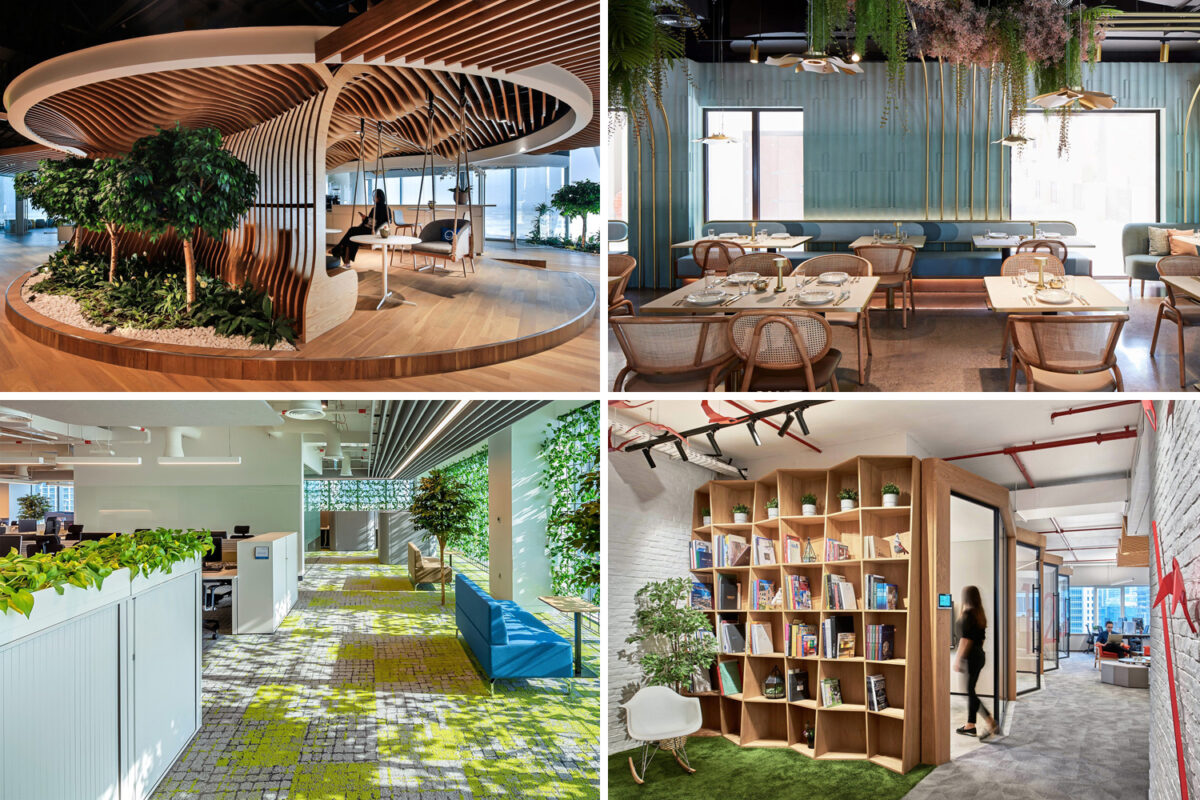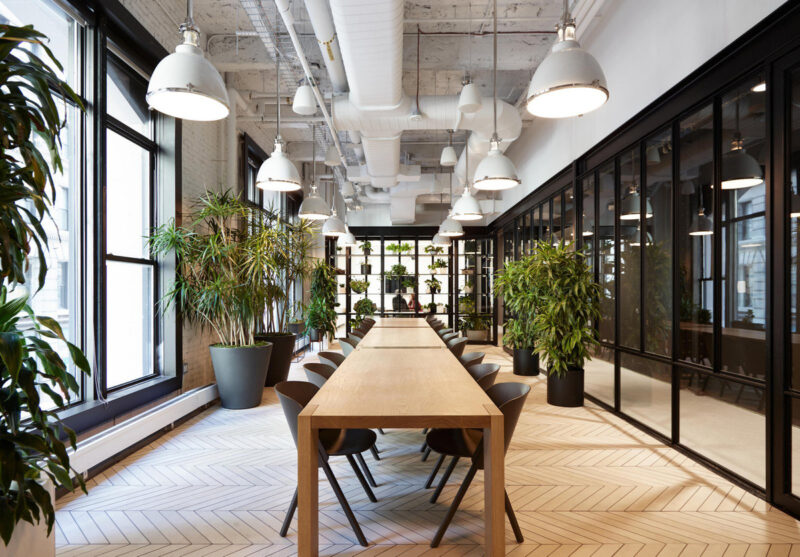Table Of Content

Thermal and Airflow Variability pattern is considered to be slight variations in airflow, temperature, relative humidity, and differing thermal materials that mimic being in nature. Thermal comfort is a crucial factor that governs the productivity levels, serenity, and health of occupants in the home. Having an awareness of a controllable risk can support positive experiences (Van den Berg & ter Heijne, 2005) that result in strong dopamine or pleasure responses (Kohno et al., 2013; Wang & Tsien, 2011; Zald et al., 2008). These experiences play a role in developing risk assessment during childhood (Louv, 2009; Kahn & Kellert, 2002). In adults, short doses of dopamine support motivation, memory, problem solving and fight-or-flight responses; whereas, long-term exposure to intense Risk/Peril conditions may lead to over-production of dopamine, which is implicated in depression and mood disorders (Buraei, 2014; Kandel et al., 2013).
What Is Biophilic Design? 4 Ways to Incorporate This Style
Fractal patterns can be identified in classical art and vernacular architecture from the column capitals of ancient Greece and Egypt, the art of Ancient Mayans, Islamic and Egyptian art, Hindu temples, Angkor Wat in Cambodia (12th century), and the Eiffel Tower in Paris (1889). Fractals are also evident in such well-known works as those of Botticelli, Vincent van Gogh, and Jackson Pollock. Natural materials can be decorative or functional, and are typically processed or extensively altered (e.g., wood plank, granite countertop) from their original ‘natural’ state, and while they may be extracted from nature, they are only analogous of the items in their ‘natural’ state. There are essentially two approaches to applying Biomorphic Forms & Patterns, as either a cosmetic decorative component of a larger design, or as integral to the structural or functional design. A space with a good Connection with Natural Systems evokes a relationship to a greater whole, making one aware of seasonality and the cycles of life. The experience is often relaxing, nostalgic, profound or enlightening, and frequently anticipated.
Indirect experience of nature
The Art Nouveau Hotel Tassel in Brussels (Victor Horta, architect, 1893) is a favorite example of Biomorphic Forms & Patterns. The interior space in particular is rife with natural analogues, with graphic vine-like tendrils painted on the wall and designed into the banisters and railings, floor mosaics, window details, furniture, and columns. The curvaceous tiered steps seem to make distant reference to shells or flower petals.
Go Primal: 5 Beautiful Ways To Bring Biophilic Design Into Your Bedroom (We'll Explain!) - Realtor.com News
Go Primal: 5 Beautiful Ways To Bring Biophilic Design Into Your Bedroom (We'll Explain!).
Posted: Fri, 01 Sep 2023 07:00:00 GMT [source]
How to Incorporate Biophilic Design
Zeroing on a location in smaller rooms, like the home office, pick up smaller plants for the desk or to place on the windowsills. Both design moves invite a connection between indoor and outdoor while giving sun-hungry plants, such a succulents, exactly what they need. When potting and placing plants you can even combine functionality and the beauty of your greenery with special planters like the Dupray Bloom Air Purifier, which doubles as a large-sized pot and looks perfect as decor with the red-tipped Chinese evergreen. Here, seven biophilic design inspirations to revive your space and add a refreshing aesthetic through simple DIY projects and plant nurturing practices that won’t cost you too much green.
Lean into natural materials
Curves, for instance, have already been dominating interior design trends during the past couple of years, but it actually dates back centuries to when architects found inspiration in nature from the asymmetrical lines of flowers and animals. And since the human psyche prefers curved visual objects because they signal lack of threat, the architectural expression of organic forms in interior design was translated into furniture, lighting, textile, partitions, and wall motifs. An increasing amount of scientific research suggests that people are more productive, creative, happy and healthy when they experience a daily connection with nature, and are interconnected with natural systems [3] [4] [5]. Over the past decade, researchers, theorists, and leaders of the built environment have been working to establish attributes of biophilia that can be applied to design that enhance our connection to nature and ultimately improve our wellbeing. The Prospect pattern is derived from visual preference research and spatial habitat responses, as well as cultural anthropology, evolutionary psychology (e.g., Heerwagen & Orians, 1993) and architectural analysis (e.g., Dosen & Ostwald, 2013; Hildebrand, 1991; Appleton, 1996).
Biophilia is the innate human tendency to seek connections with nature and other forms of life. It’s a concept that encourages humans instinctive bond with nature and inherent desire to be in and around natural environments. This idea has been influential in various fields, including architecture and design, as it emphasizes the benefits of incorporating natural elements into the built environment to improve well-being and overall quality of life. While scientific documentation on the health impact of natural materials is limited, available research is beginning to shed light on opportunities for informed design.
Biophilic design focuses on human adaptations to the natural world that, over evolutionary time, have advanced people’s health, fitness and wellbeing. There’s nothing less natural than an environment withperfectly even temperature and light. Subtle changes in temperature and light mimic the naturalworld, reducing boredom and stimulating concentration.
Environmental benefits

And this National Taiwan University study found that some of the top biophilic design elements for improving physiological and psychological health were natural images, natural materials, and plants. The modern assumption that humans no longer need to affiliate with nature is revealed in the widespread practice of placing people in sensory deprived and artificial settings such as office buildings, hospitals, schools, shopping centers–with little if any contact with natural forces and stimuli. Much of today’s built environment is designed lacking adequate natural light, natural ventilation, natural materials, vegetation, views, environmental shapes and forms, and other evolved affinities for the natural world.
Curves, rounded objects, and arches are all part of using natural shapes and forms in your home design. It's easier than ever to do this as curvy furniture has become increasingly on-trend as more people look to soften their interiors. "Adding curves and rounded elements to a space gives it a beautiful organic feel," says Peltier. "I love to incorporate arched doorways, or even a kidney-shaped sofa or coffee table to soften up a room."
Using shapes and forms that are naturally found in nature is another important element used in biophilic design. These elements include columns, ovals, arches, shells, spirals, botanical motifs, biomimicry, etc. What Koenig is describing actually reflects a design philosophy called biophilic design. The late Stephen R. Kellert, a professor of social ecology at the Yale School of Forestry & Environmental Studies, was dedicated to advancing the understanding of the connection between humans and the natural world and was a pioneer of biophilic design. When people are in biophilicly designed spaces, they feel comfortable; their well-being and mental performance are both higher than when they’re in a place that’s not biophilicly designed. Interface, Inc. is a global commercial flooring company with an integrated collection of carpet tiles and resilient flooring, including luxury vinyl tile (LVT) and nora® rubber flooring.
Look for a localsmart home integrator about creating this experience in your home. Whether you’re planning a major remodel or just looking forways to make your home more positive, healthful and relaxing, incorporating abit of biophilia will help get it done. When shopping for new furnishings, look for more sculptural sofas and chairs that have rounded edges, rather than stiff, linear shapes, suggests Stafford.
Being surrounded by plain grey monotonous colors will not make us feel welcome and could create feelings of sadness and anxiety. Risk can be generated by a learned or biophobic response triggered by a near and present danger. This danger, however, is inert and unable to cause harm due to a trusted element of safety.
In urban environments where sensory overload is common (119. Joye, 2007 ), such experiences will be most valued and impactful when situated in locations with high foot traffic, allowing for a greater frequency of access to trigger the desired biophilic response. Traditional Japanese doorway gardens are a perfect example of replicable small-scale interventions. For example, a project team may embrace the Visual Connection with Nature pattern to enhance the workplace experience for a series of interior fit-outs for a portfolio of offices. The strategy would be to improve views and bring plants into the space; the interventions may include installing a green wall, orienting desks to maximize views to outdoors, and initiating an employee stipend for desk plants. The detail, location, and the extent to which each of these interventions is implemented will differ for each of the offices in the portfolio.
Targeting an optimal dimensional ratio for design applications can be problematic (i.e., time consuming, inconsistent and even inaccurate), of questionable long-term value, and essentially less important than the incorporation of third-iteration fractal designs. As Salingaros (2012) points out, identifying precise fractal geometries in existing naturescapes, structures and artworks is a challenge, whereas generating new works with complex fractals is quite easy, so specifying fractal artwork, for instance, may not always be the most efficient use of project resources. The objective of the Non-Rhythmic Sensory Stimuli pattern is to encourage the use of natural sensory stimuli that unobtrusively attract attention, allowing individuals’ capacity for focused tasks to be replenished from mental fatigue and physiological stressors. This can be achieved by designing for momentary exposure to the stochastic or unpredictable movement, particularly for periphery vision or the periodic experience of scents or sounds. A view to nature through a glass window provides a benefit over a digital screen (e.g., video/plasma tv) of the same view, particularly because there is no parallax shift for people as they move toward or around a video screen (Kahn et al., 2008). Nevertheless, simulated or constructed nature is measurably better at engendering stress reduction than having no visual connection at all.
It’s clear that incorporating nature into our lives has benefits, for us and nature, so now it’s time to implement it. It will allow water to follow its natural cycle and won’t obstruct the natural flow of nutrients either. Other ways to develop sponge cities include adding natural flood barriers, forests, and parks.

No comments:
Post a Comment